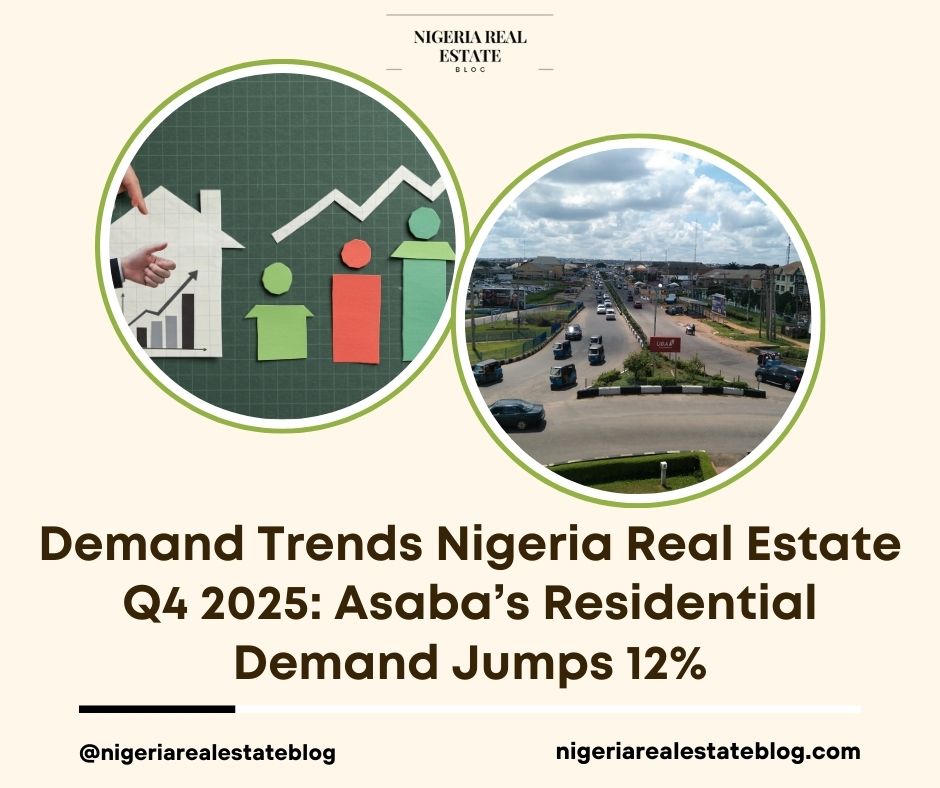
Top 5 Eco-Friendly Home Designs in Nigeria for 2025
Nigeria’s real estate market is embracing sustainability like never before. With a 22 million housing deficit and a 20% rise in green building demand (source: BusinessDay, 2025), eco-friendly home designs are reshaping how Nigerians live—blending style, affordability, and environmental consciousness. From Lagos to Abuja, architects are innovating to combat high energy costs (electricity up 15% in 2024, per NERC) and climate challenges like heat and flooding.
This Architecture guide unveils the top 5 eco-friendly home designs in Nigeria for 2025, perfect for homeowners, architects, and investors. We’ll explore designs like solar-powered bungalows and modern mud-brick homes, with costs, examples, and tips to build your own. Whether you’re in Lekki, Kano, or abroad, these designs will inspire your next project.
NOTE: This house designs were generated using AI Designs
Table of Contents
-
Why Eco-Friendly Homes Matter in Nigeria
-
Solar-Powered Bungalows
-
Modern Mud-Brick Homes
-
Cross-Ventilated Tropical Villas
-
Recycled Material Flats
-
Rainwater Harvesting Duplexes
-
How to Build Your Eco-Friendly Home
-
The Future of Green Architecture in Nigeria
1. Why Eco-Friendly Homes Matter in Nigeria
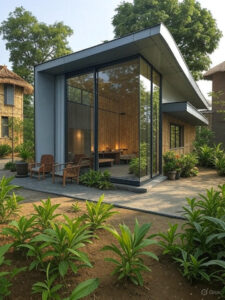
Eco-friendly homes use sustainable materials, energy-efficient systems, and climate-smart designs to reduce costs and environmental impact. In Nigeria, where 70% of households spend ₦50,000/month on electricity (source: NERC, 2024), green designs cut bills by 30–50%. They also address flooding (Lagos floods displaced 10,000 in 2024) and heat (average 32°C in Abuja).
2. Solar-Powered Bungalows
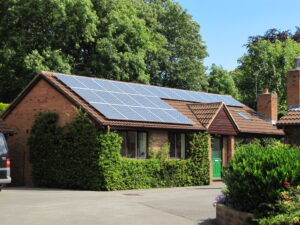
Cost: ₦15M–₦25M (2–3 bedrooms)
Features: Solar panels, energy-efficient appliances, insulated roofs.
Best For: Urban areas like Abuja, Lagos.
Solar bungalows use rooftop panels (₦2M for 5kW system) to power homes, slashing electricity bills by 80%. Insulated roofs keep interiors cool, ideal for Nigeria’s heat.
Example: Temi, a teacher in Asokoro, built a ₦18M solar bungalow, saving ₦40,000/month on bills. Her home powers lights, fans, and a fridge off-grid.
3. Modern Mud-Brick Homes
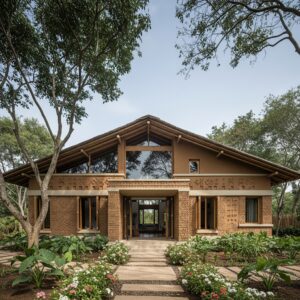
Cost: ₦8M–₦15M (2–3 bedrooms)
Features: Compressed earth bricks, natural ventilation, thatched or zinc roofs.
Best For: Rural areas like Kano, Enugu.
Mud-brick homes, inspired by traditional Hausa architecture, stay cool without AC. Modern designs add cement for durability, costing 40% less than concrete.
Example: Musa, a farmer in Zaria, built a ₦10M mud-brick home, spending ₦0 on cooling despite 35°C summers.
Tip: Hire architects trained in vernacular design (check Nigerian Institute of Architects).
4. Cross-Ventilated Tropical Villas
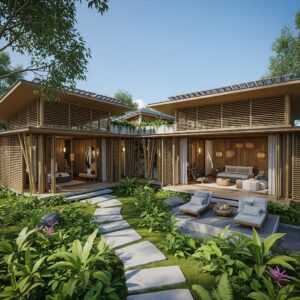
Cost: ₦20M–₦35M (3–4 bedrooms)
Features: Wide windows, high ceilings, shaded verandas.
Best For: Coastal areas like Port Harcourt, Calabar.
Tropical villas maximize airflow with strategic window placement, reducing AC use by 60%. Verandas provide shade, blending style and function.
Example: Ada, a lawyer in Lekki, built a ₦25M villa, cutting energy costs by ₦30,000/month.
Tip: Use louvered windows for better airflow.
5. Recycled Material Flats
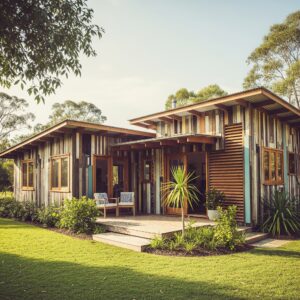
Cost: ₦12M–₦20M (2–3 bedrooms)
Features: Recycled plastic bricks, upcycled wood, solar water heaters.
Best For: Urban estates like Ibadan, Jos.
These flats use plastic waste (e.g., bottles) for bricks, reducing costs by 20%. Upcycled wood adds rustic charm, appealing to young buyers.
Example: Chidi, a startup founder in Owerri, built a ₦15M flat using 10,000 recycled bottles, saving ₦3M.
6. Rainwater Harvesting Duplexes
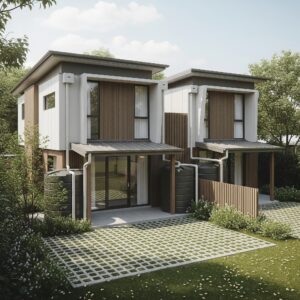
Cost: ₦30M–₦50M (4–5 bedrooms)
Features: Rainwater tanks, permeable pavements, green roofs.
Best For: Flood-prone areas like Lagos, Warri.
Duplexes with rainwater systems store 10,000 liters/season, cutting water bills by 50%. Green roofs reduce heat, enhancing luxury.
Example: Funmi, a doctor in Ikoyi, built a ₦40M duplex, saving ₦20,000/month on water.
Tip: Install filters for safe drinking water.
7. How to Build Your Eco-Friendly Home
-
Hire a Green Architect: Find experts via Nigerian Institute of Architects (nia.ng).
-
Choose a Design: Match your budget and location (e.g., mud-brick for rural).
-
Source Materials: Use local suppliers (e.g., EcoBricks for recycled materials).
-
Add Systems: Install solar panels or rainwater tanks (₦1M–₦2M).
-
Get Permits: Comply with local laws (see our tenancy guide).
8. The Future of Green Architecture in Nigeria
With Nigeria’s green building market projected to hit $2 billion by 2027 (source: TechCabal), eco-friendly designs are here to stay. Proptech platforms like MyPropfolio offer fractional ownership of green estates, starting at $1,000, making sustainability accessible (see our investing guide).
Embrace Sustainable Living in Nigeria
These eco-friendly home designs blend Nigeria’s cultural heritage with modern innovation, offering affordable, stylish solutions for 2025. Whether you’re building in Abuja or investing from abroad, green architecture is the future. Share this Architecture guide to inspire sustainable living!
Share This Post: Post on LinkedIn, X, WhatsApp, or Instagram to spread the green wave! 🌍
Join the Conversation: Comment: Which eco-friendly design is your favorite? Let’s go green!
Subscribe to Nigeria Real Estate Blog for more architecture trends, proptech insights, and investment tips!

